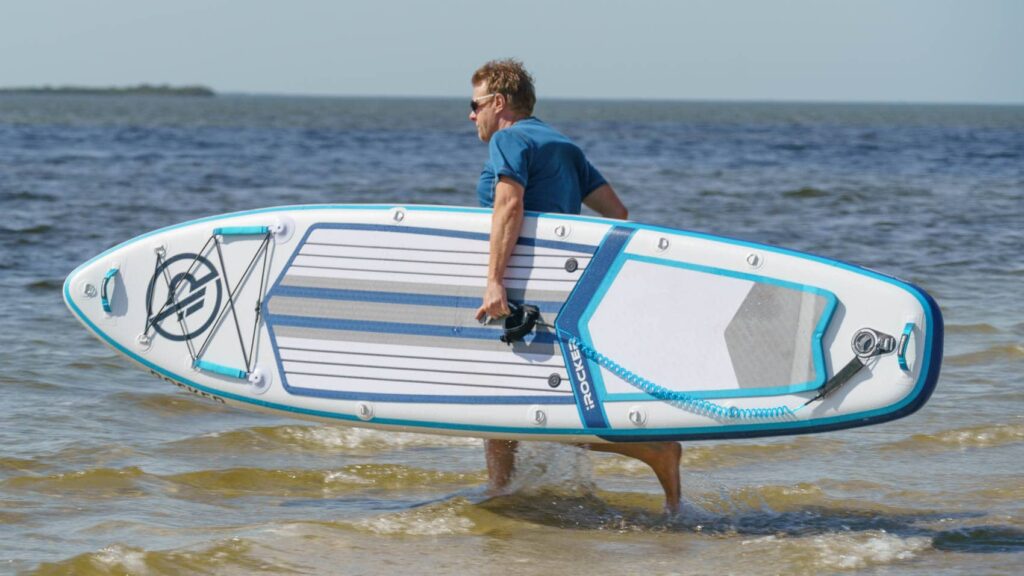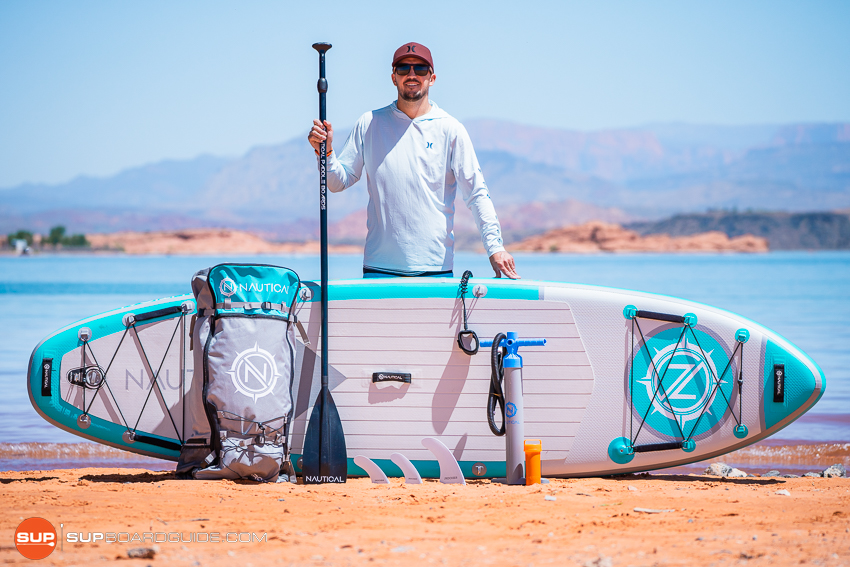Nautical paddleboarding is gaining popularity due to its unique and immersive experience. This guide outlines key factors to consider when choosing the best paddleboard for a satisfying adventure.
Types of Nautical Paddle Boards
Before delving into the specifics, it’s essential to understand the various types of nautical paddle boards available in the market. Use our exclusive store iROCKER Coupon Code to grab the best deals on Nautical Paddle Boards. There are primarily three types:
- All-Around Paddle Boards: Versatile and suitable for all skill levels, these boards are great for beginners. They offer stability and manoeuvrability, making them ideal for various water conditions.
- Touring Paddle Boards: Designed for longer distances, touring boards are narrower and more streamlined. They provide better tracking and efficiency, making them suitable for paddlers with intermediate to advanced skills.
- Inflatable Paddle Boards: Known for their portability and convenience, inflatable boards are easy to transport and store. They are a popular choice for travellers or those with limited storage space.
Understanding the differences between these types is crucial as it sets the foundation for making an informed decision based on your skill level, preferences, and intended use.
Paddle Board Dimensions
The dimensions of a nautical paddle board play a significant role in determining its stability, speed, and overall performance. Key dimensions to consider include:
- Length: Longer boards provide better speed and tracking, making them suitable for touring and racing. Shorter boards, on the other hand, offer increased manoeuvrability and are ideal for surfing or casual paddling.
- Width: Wider boards offer enhanced stability, making them suitable for beginners or those looking for a more relaxed experience. Narrower boards provide greater speed and are preferable for more advanced users.
- Thickness: The thickness of a paddle board affects its buoyancy and stability. Thicker boards are generally more stable, while thinner boards offer a lower profile and better performance in the water.
Finding the right balance in these dimensions depends on your skill level, intended activities, and personal preferences. Beginners may lean towards wider and longer boards for added stability, while experienced paddlers may opt for sleeker designs for increased speed and agility.
Construction Materials
The construction materials of a nautical paddle board significantly impact its durability, weight, and performance. Common materials include:
- Epoxy/Fiberglass: These boards are known for their rigidity and durability. They provide excellent performance in various water conditions and are suitable for intermediate to advanced paddlers.
- Inflatable PVC: Inflatable paddle boards are made of durable PVC materials and are reinforced with drop-stitch technology. They are lightweight, portable, and suitable for all skill levels. However, they may sacrifice some rigidity compared to epoxy/fibreglass boards.
- Plastic: Budget-friendly and durable, plastic paddle boards are a good option for beginners. However, they tend to be heavier and may lack the performance features of more advanced materials.
Consider your budget, storage options, and desired performance when choosing the construction material that best aligns with your needs.

Fin Setup
The fin setup of a nautical paddle board influences its tracking, stability, and manoeuvrability. There are three main types of fin setups:
- Single Fin: Provides better straight-line tracking and is suitable for touring or racing. Single-fin setups are often found on longer paddle boards.
- Thruster (Three-Fin) Setup: Offers a balance between tracking and manoeuvrability. This setup is versatile and suitable for various water conditions, making it a popular choice for all-around paddle boards.
- Quad Fin Setup: Comprising four fins, this setup enhances manoeuvrability and is commonly found on surf-specific paddle boards. It provides excellent control in waves but may sacrifice some tracking.
The choice of fin setup depends on your preferred activities and the water conditions you’ll be navigating. Consider the balance between tracking and manoeuvrability to find the optimal fin setup for your paddle board.
Weight Capacity
Each nautical paddle board comes with a specified weight capacity, indicating the maximum load it can support. It’s crucial to choose a board with a weight capacity that accommodates both your body weight and any additional gear or accessories you plan to bring along.
Selecting a board with a higher weight capacity ensures stability and optimal performance on the water. Be honest about your weight and the intended use of the paddle board to avoid compromising safety and enjoyment during your paddling adventures.
Deck Pad and Traction
The deck pad of a nautical paddle board plays a vital role in providing comfort and traction. A high-quality deck pad offers a non-slip surface, enhancing stability and preventing slips, especially in wet conditions. Look for boards with comfortable and durable deck pads, as they contribute to a more enjoyable paddling experience.
Additionally, some paddle boards feature specialized traction zones or patterns designed for specific activities, such as yoga or fitness paddling. Consider your intended use and choose a deck pad that aligns with your preferences and activities.
Additional Features
Beyond the essential factors mentioned, several additional features can enhance your nautical paddleboarding experience:
- Bungee Storage: Some paddle boards come with bungee storage areas, providing a convenient way to secure your belongings, such as a water bottle, dry bag, or other essentials.
- Carry Handles: Sturdy and comfortable carry handles make it easier to transport your paddle board to and from the water. Multiple handles are advantageous for different carrying positions.
- D-Rings and Attachments: D-rings and attachment points allow you to secure additional accessories, such as a kayak seat, paddle holder, or safety leash.
- Kick Pad or Tail Rocker: Found at the tail of the board, a kick pad or tail rocker enhances manoeuvrability and makes it easier to pivot the board.
Consider these additional features based on your preferences and intended use to ensure your paddle board meets all your requirements.
Conclusion
Selecting the right nautical paddle board depends on factors like board type, dimensions, construction materials, fin setup, weight capacity, and deck pad. Understanding skill levels and activities ensures a thrilling and satisfying experience. ScoopCoupons offers top brands and competitive prices through its extensive collection of coupons and deals.


